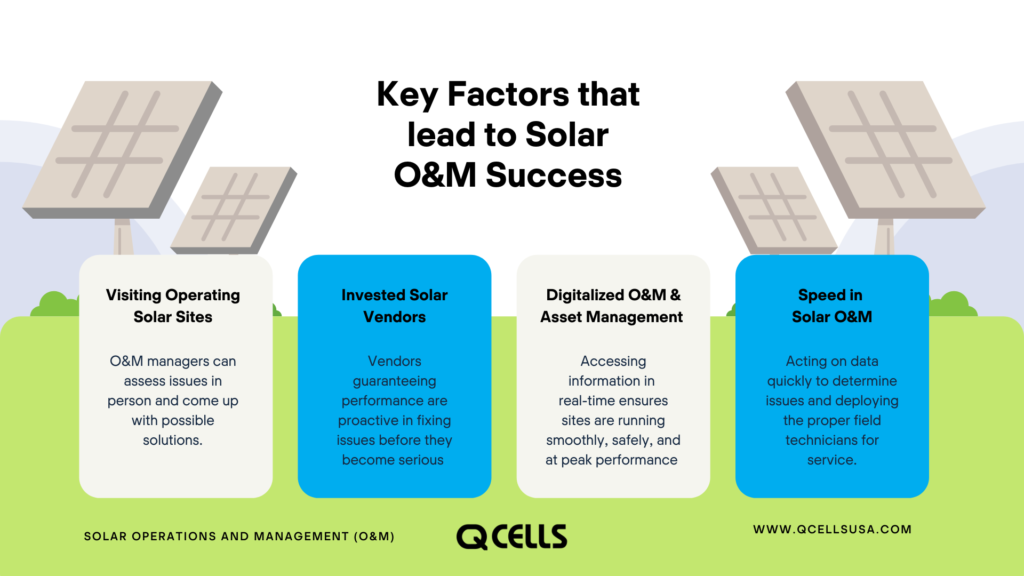
Solar operations and management (O&M) services are an important part of solar energy performance. Solar O&M companies perform a variety of tasks. Tasks include maintaining solar panels, cleaning the system to increase performance, and monitoring for damage. There is also a vast amount of data that needs to be collected.
All this data must be analyzed to understand how well the solar systems are performing. As the US market changes, there has been a shift in the type of solar O&M services that are most successful. The four factors we will focus on include:
- Visiting operating solar sites
- Vendors with skin the game
- Digitalized Solar O&M and Asset Management
- Speed in Solar Operations and Maintenance
Visiting Operating Solar Sites

One of the most important aspects of success in solar O&M is being able to visit the solar sites. By visiting, O&M managers can assess issues in person and come up with possible solutions. In some cases, it may not be possible to visit a solar site in person. COVID-19 has made it difficult to travel for in-person site visits.
In-Person Solar Site Visits
Solar O&M managers can see issues firsthand and make decisions quickly to solve them. They can review the problems and troubleshoot on the spot.
Solar O&M managers have a front-row seat to the issues that arise with a solar power plant. They can resolve problems quickly and make decisions on-site. This is great because they’re not relying solely upon data from afar. But, it isn’t always possible to visit. The primary issue now is restrictions because of COVID-19.
In these cases, the solar O&M company will need to find a way to solve the issues remotely. This means relying on the local Maintenance Service providers.
Local Maintenance Service Providers
When a solar manager isn’t able to get on-site, they turn to their local service providers.
Having a competent team that can assist the solar O&M manager makes maintenance much easier. Problems with solar equipment need to be reviewed. Local solar service providers can visit in the place of O&M managers. This could involve sending someone out to take pictures or videos of the site. That info is then sent them back to the company for analysis.
Whatever the case may be, it is important to have a plan in place for getting someone to a solar site to assess problems.
Solar Vendors with Skin the Game
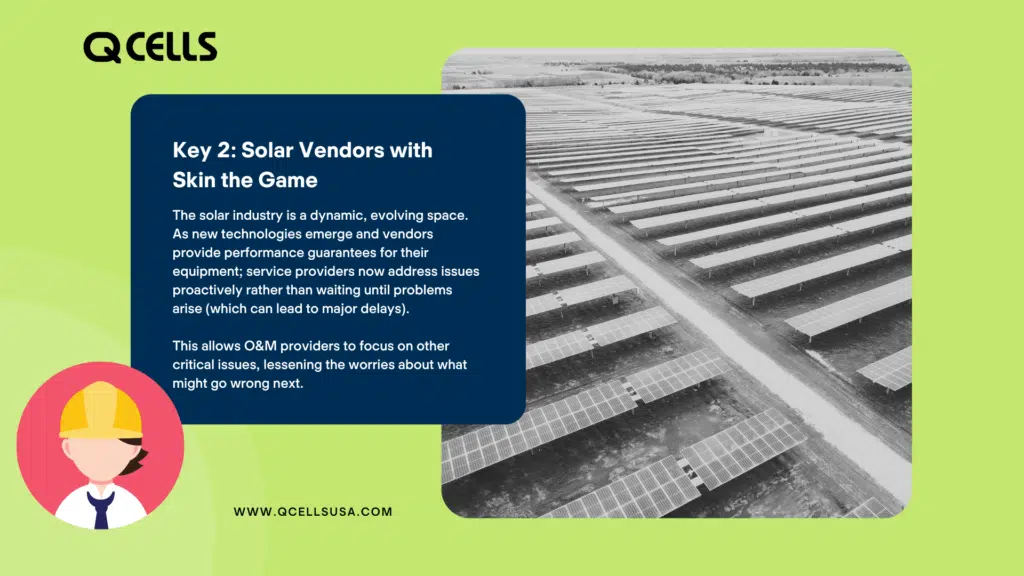
The solar industry is constantly changing and evolving. With the rise of new technologies, vendors are beginning to provide performance guarantees. Service providers now address issues proactively. Vendors don’t need to sit and wait on the solar O&M provider.
Solar equipment problems get fixed fast. Vendors have more stake in the proper operation of the site as there are liquidated damages in the contract. This allows owners to concentrate on more critical asset management activities.
Performance Guarantees
Service providers can fix an issue without needing to ask permission from the O&M manager. They have a lot at stake in the solar site working properly. There are penalties if it doesn’t meet certain performance levels.
Focusing On Critical Asset Management Activities
Most utility-scale solar sites have hundreds of thousands of solar panels. Trying to keep a close eye on the health of each panel is an overwhelming task. Solar power plant owners need to make sure their solar arrays are performing at peak levels.
Vendors that proactively maintain their equipment allow solar O&M managers more flexibility. They can focus on the key activities that create high-performing solar power plants.
Digitalized Solar O&M and Asset Management

The solar O&M industry is adapting to data integration and digitalization. This has been a tough sell in the industry. Most solar O&M companies are still working with many information silos. These disconnected systems have to be collected to provide reports to stakeholders. Integrating data from several sites and sources are critical to managing operating assets.
Digitalized O&M and Asset Management Platform
A digitalized solar O&M platform provides solar companies with better insight into their operating assets. Monitoring the health of each asset is crucial. It ensures that they are running smoothly, safely, and at peak performance levels. By accessing more information in real-time, solar companies can make informed decisions. This is imperative when it comes to preventing and addressing potential issues.
One of the keys to reducing the risk of downtime is knowing how your assets are performing. Real-time info also helps avoid costly repairs. Data analytics, like predictive maintenance for solar sites, increases solar plant performance.
You should be asking your solar O&M provider:
- Who manages your site?
- What type of platform do they use?
Your O&M provider should have systems in place that help you:
- Know how your solar assets are performing and what needs to be fixed
- Reduce the risk of downtime and costly repairs
- Improve solar plant performance with proactive notifications
Speed in Solar Operations and Maintenance
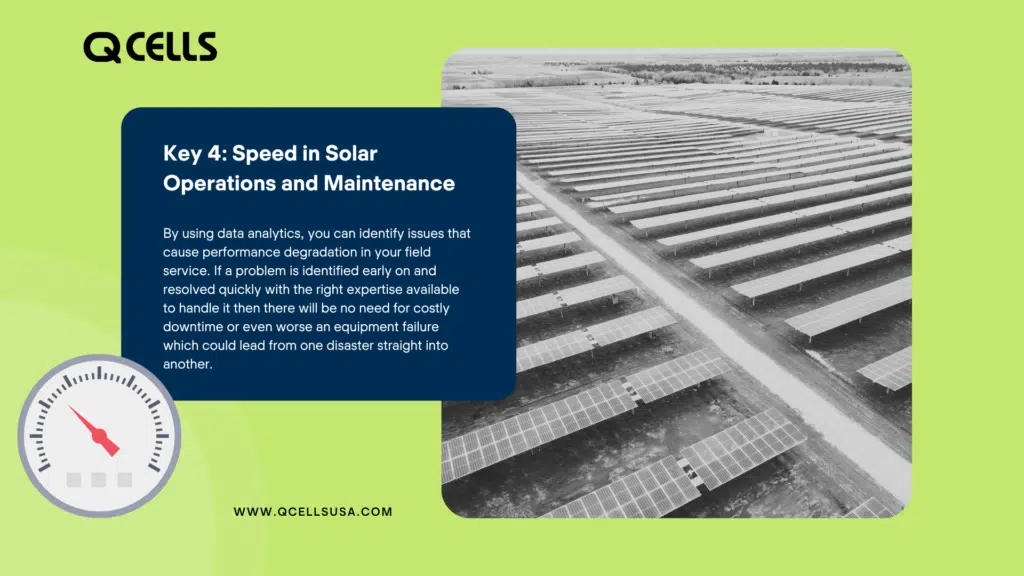
Speed is another key to successful solar operations and maintenance. The operations team needs to have:
- Strong data analytics component to identify issues that cause performance degradation.
- The ability to quickly dispatch field service. It is also critical to have the right expertise available to be deployed.
Strong Data Analytics
By having a strong data analytics component, the operations team can quickly identify issues that cause performance degradation.
- Improved efficiency and performance: Field service can be dispatched in a more timely manner to identify and resolve the problem.
- Reduced downtime: Operations will know what is wrong with a system before it breaks, potentially saving hours for maintenance windows.
- Increased productivity: The operations team can focus on other projects instead of manually identifying issues.
- Easier troubleshooting: By monitoring data trends, they will be able to isolate errors quicker than ever before.
Field Service Expertise
It is important to have the right expertise in field service. This ensures that repairs are done as efficiently as possible. By integrating data analytics, O&M teams can identify which field service is needed.
Solar developers who have an O&M department within the company ensure systems are designed properly. Solar asset managers and engineers are aware of all components in play, how they work together, and can identify issues quickly. Repairs to the solar plants are performed fast.
At the heart of it, solar farms are data-heavy installations. By having the right expertise in place, solar asset managers can get solar facilities to operate at their top capacity.
Conclusion
- An in-person site visit can result in faster issue resolution.
- With the rise of new solar technologies, vendors are beginning to provide performance guarantees. This means vendors take responsibility for maintaining the performance of their equipment.
- The solar O&M industry is adapting to have more integrated and digitalized systems.
- Speed in resolving issues means less downtime on solar facility operation.
- Operation teams can use data analytics that identifies issues causing degradation in performance.
- The integrated information lets the asset manager quickly dispatch field service representatives. The information informs which expertise is needed for a given issue.
Talk to Q CELLS O&M about how we can make sure your solar sites are getting the best management so they perform at their peak output.
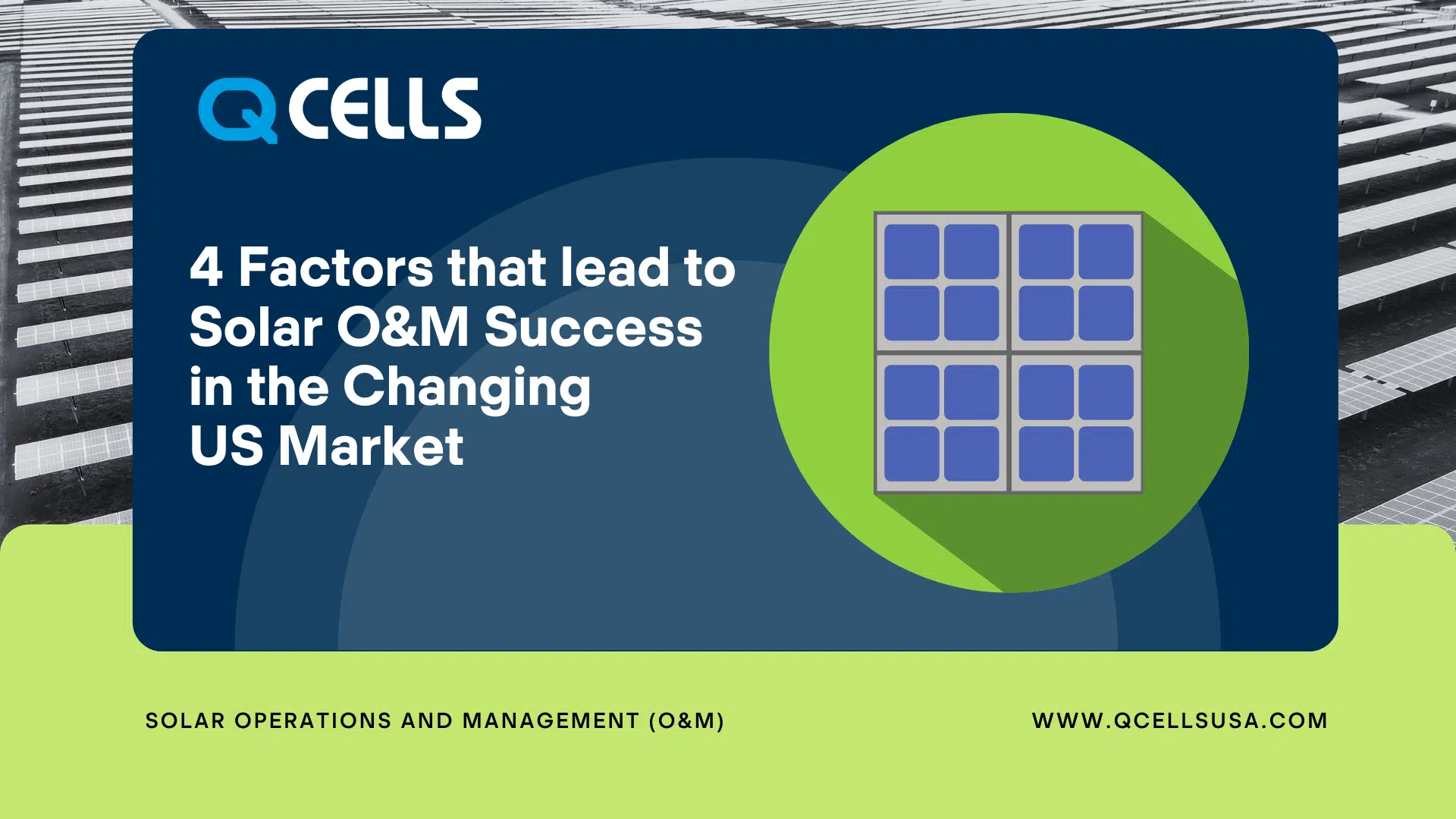
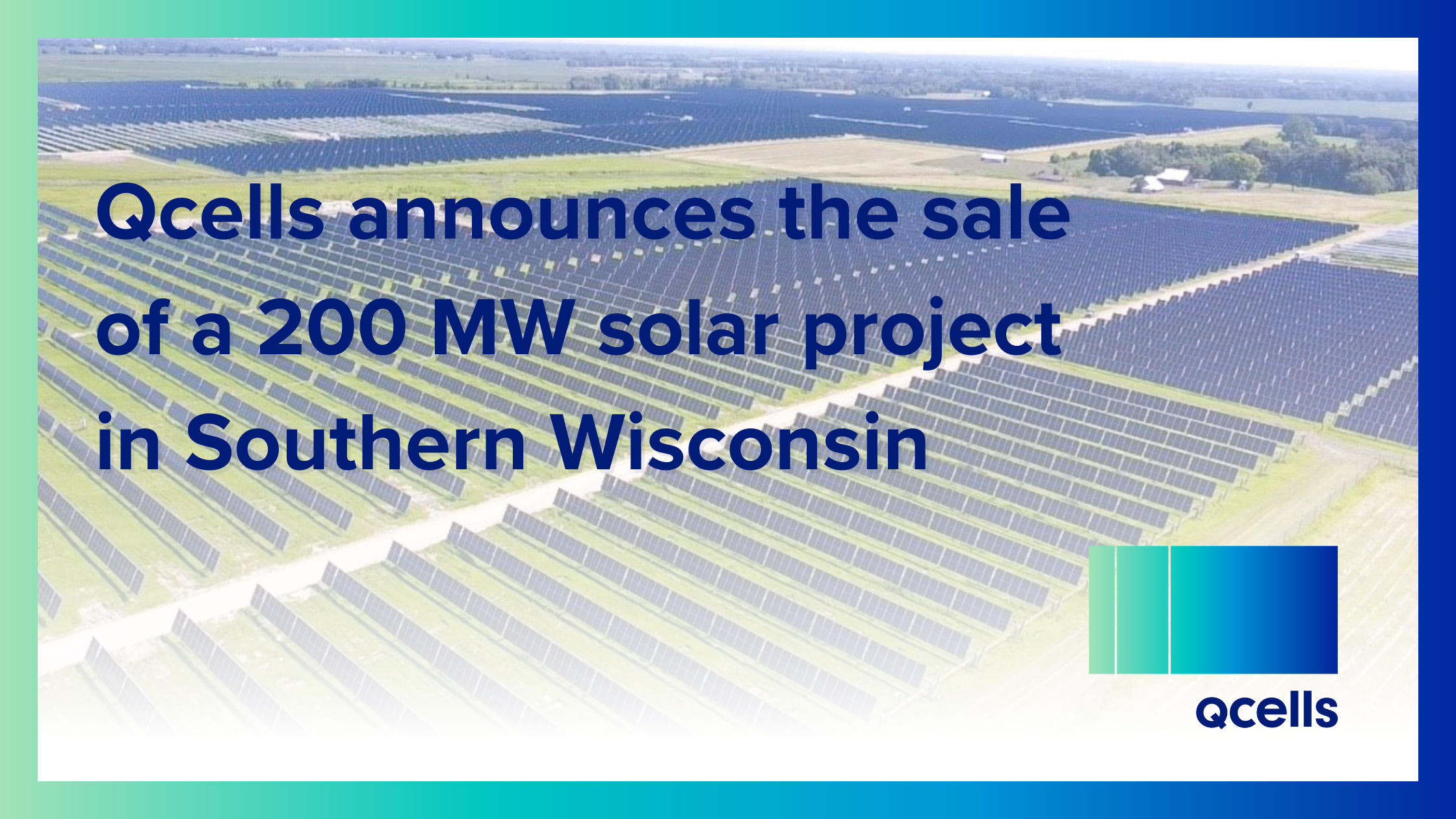
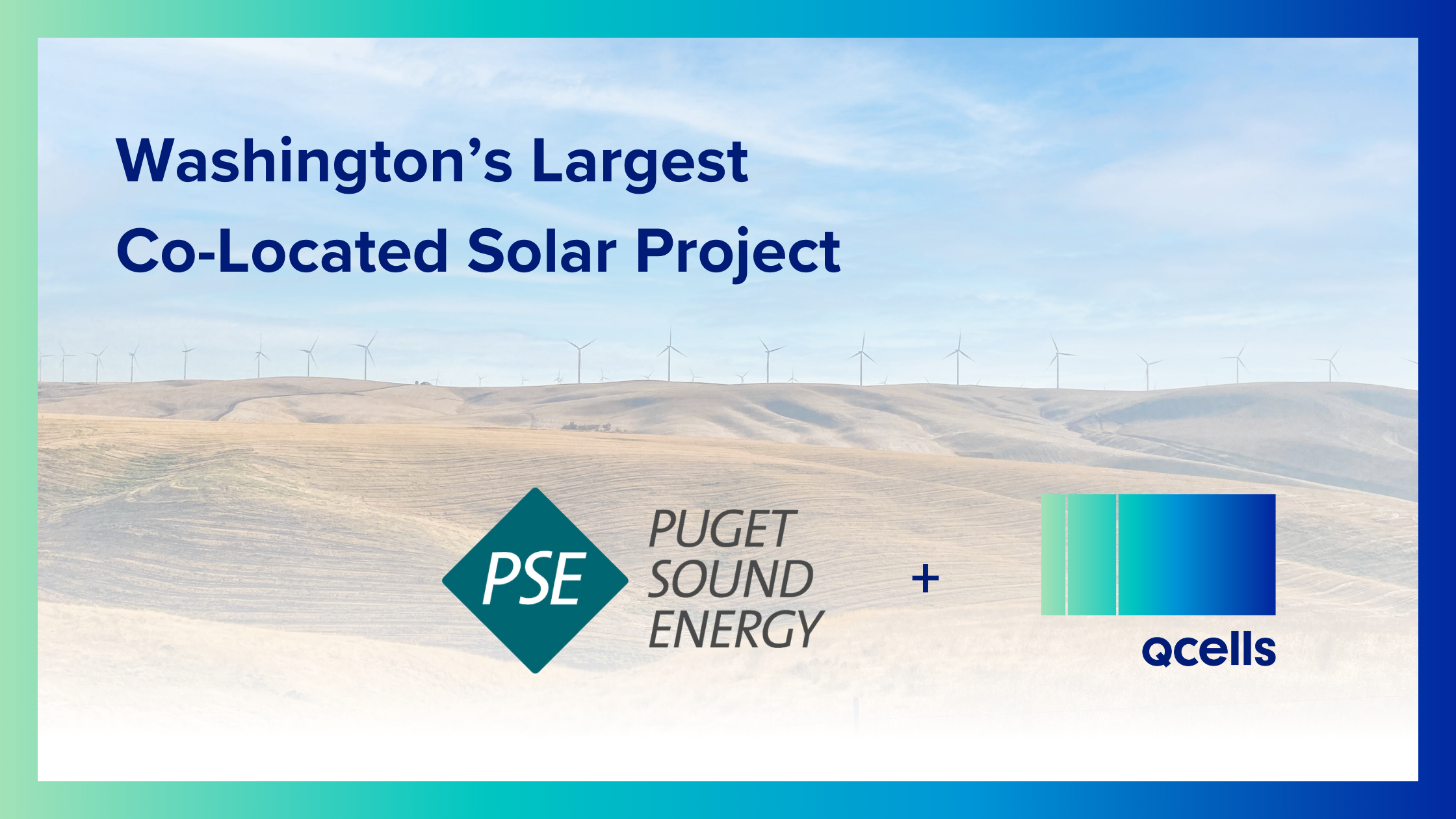
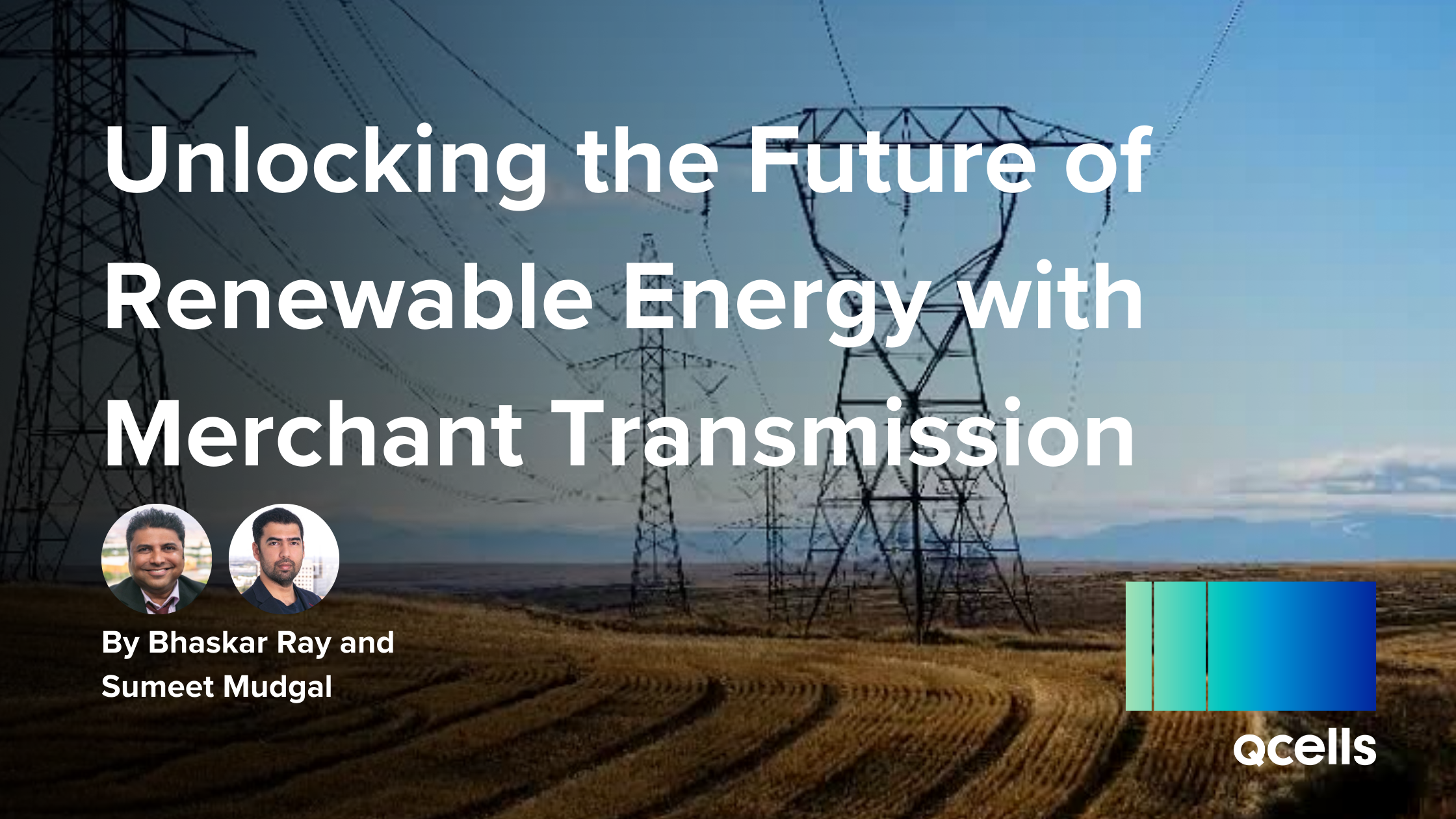

 USA & Canada
USA & Canada Korea
Korea Germany
Germany United Kingdom
United Kingdom France
France Italy
Italy Netherlands
Netherlands Greece
Greece Poland
Poland Portugal
Portugal Hungary
Hungary Spain
Spain Australia
Australia Japan
Japan